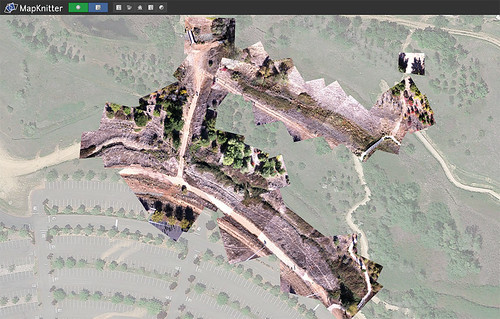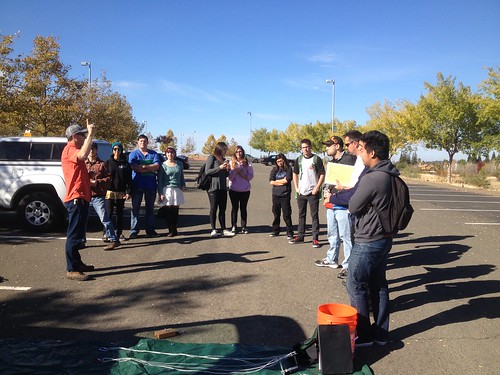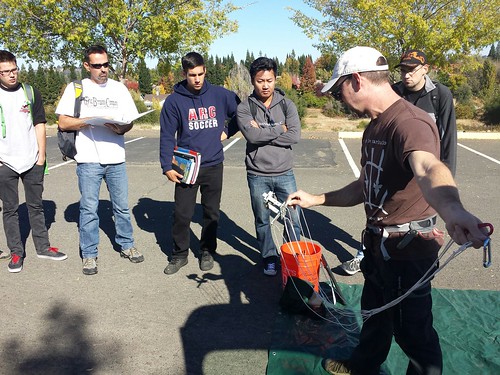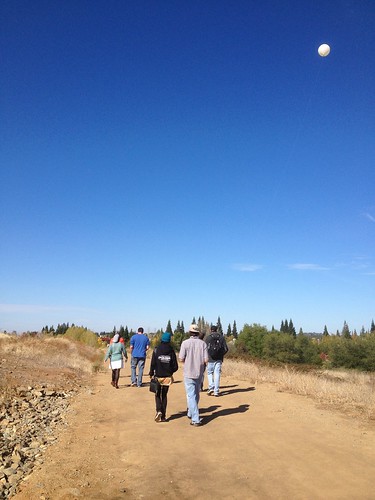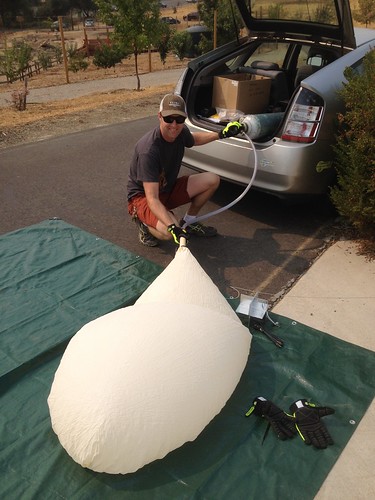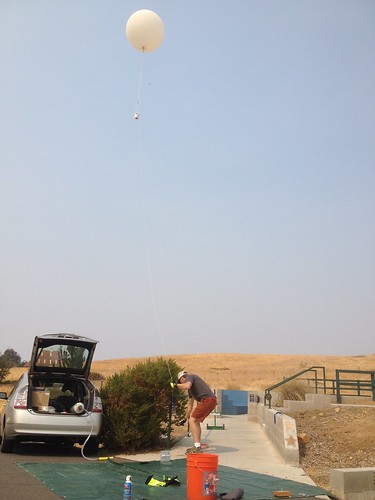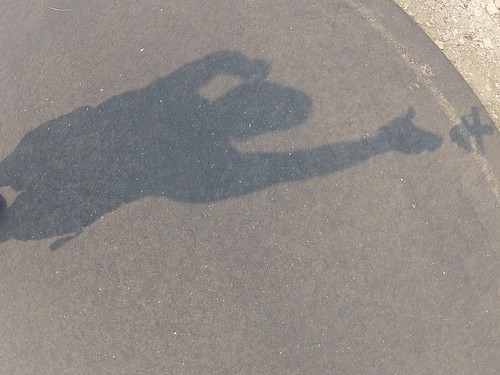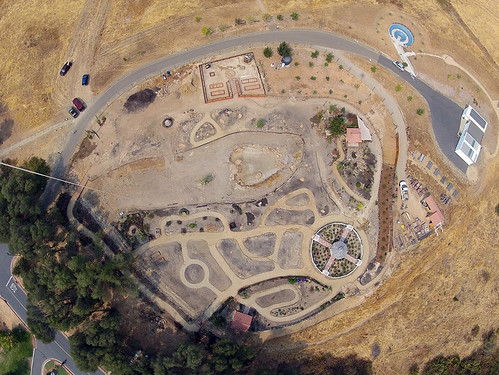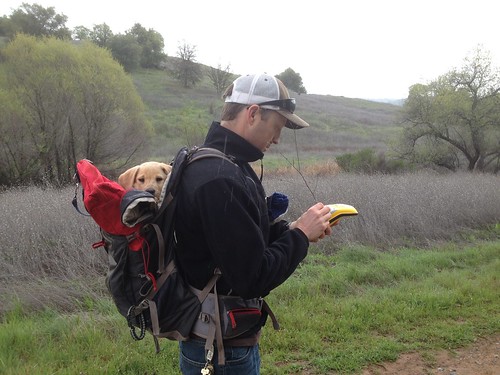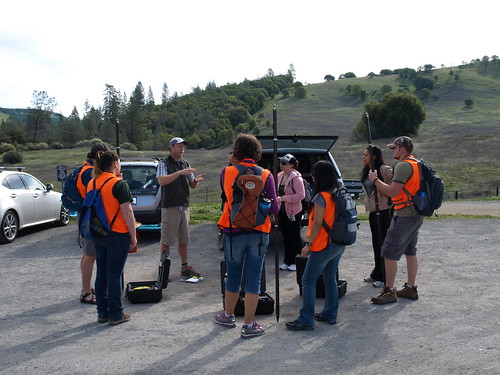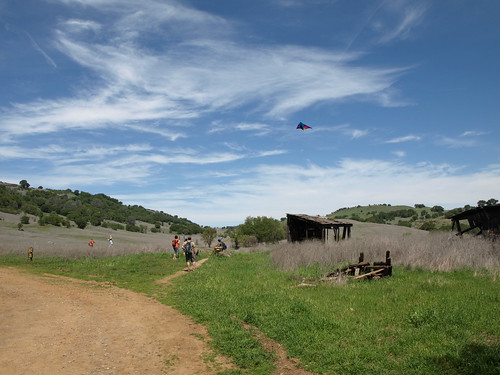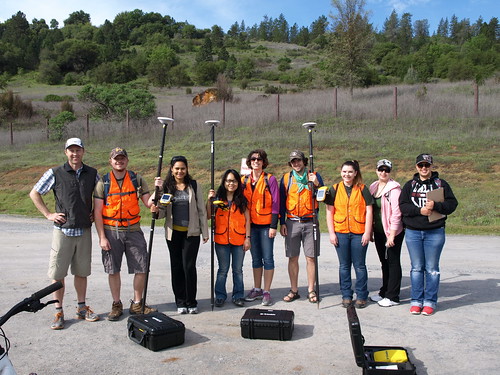For Folsom Lake College’s 10th anniversary celebration, we rigged up the balloon to stream video to a monitor on the ground, using a custom rig with a POV camera, battery, and transmitter, all housed in an apple juice bottle rig.
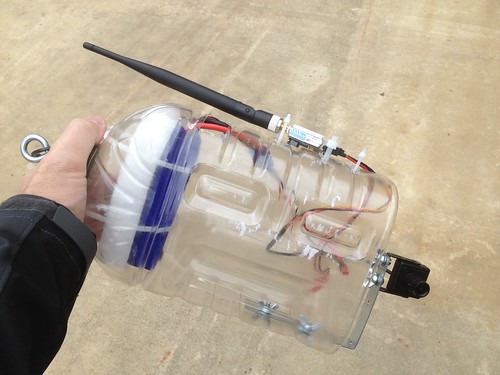
Never having tried the setup before, we launched the balloon, and streamed the video to a little field monitor. Everything worked perfectly, and on the first try besides! Children seemed to appreciate the balloon’s eye view of the college.
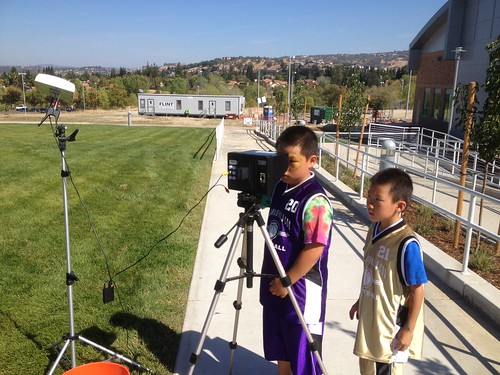
We had to pull the balloon down and hide it from the falcons that were flown once or twice throughout the day. Apparently balloons are used in training the birds, and we were concerned that they would go after it.
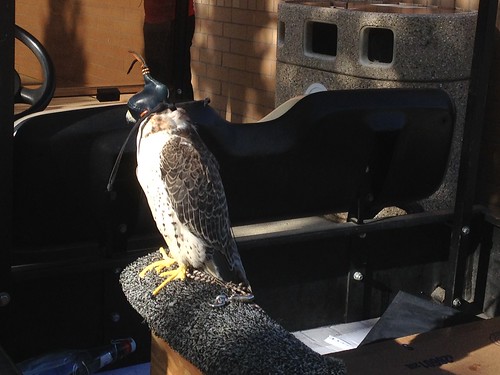
After the falcons had finished their flights, we launched the balloon again, now streaming to a much bigger monitor stationed at our table. Once again, things worked exactly as planned. The video was surprisingly clear and the stream stable, save a few transmission hiccups from time to time.
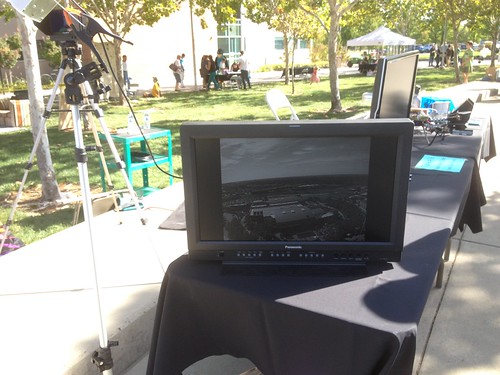
Next steps include building a dual rig, with a camera for still images, and the streaming gear to aid in positioning the balloon. We also need to explore fins or other means of stabilizing the streaming rig, as it got to swinging pretty severely at times. It was attached directly to the string attachment point, so it’s entirely possible that hanging it from a picavet will take care of the swing.


